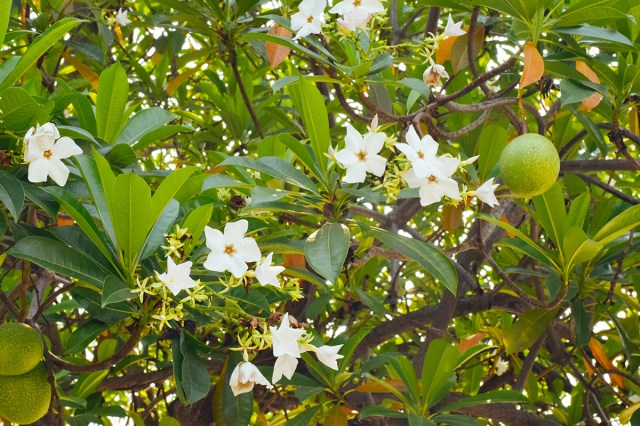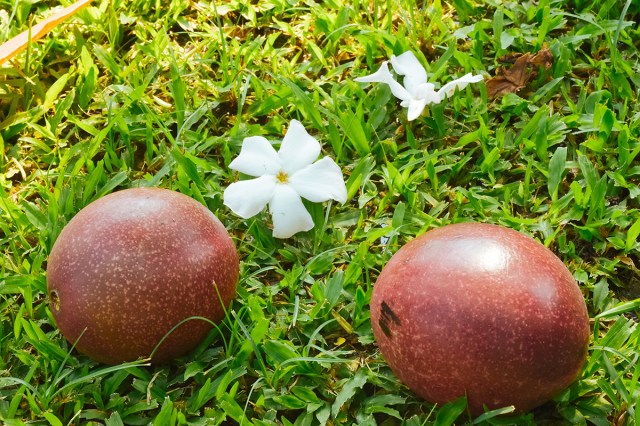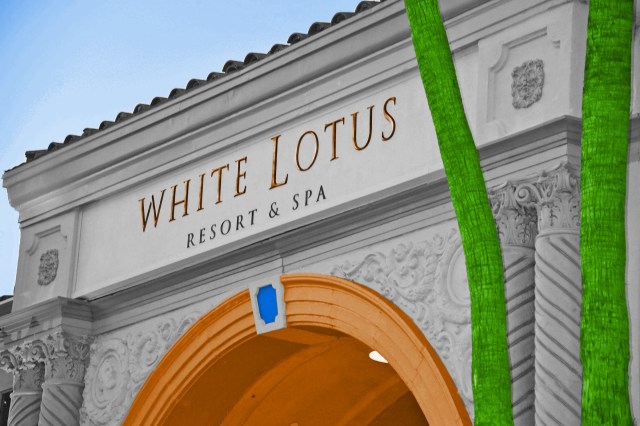
What Is Pong Pong?
In the last episode of season 3, “Amor Fati,” the character Lochlan (portrayed by Sam Nivola) nearly dies after inadvertently consuming seeds from the poisonous pong pong fruit. The seeds had been left in a blender by his father, Timothy (Jason Isaacs), who considered offing his whole family before getting cold feet. But Timothy didn’t think to clean out the remnants of the blender before Lochlan made a protein shake the next morning, resulting in a nearly fatal accident. These events were not entirely the stuff of fiction: The pong pong fruit is indeed very real, and potentially lethal if eaten.
The pong pong tree is native to Thailand and other parts of Southeast Asia, as well as India, various Pacific Islands, and the state of Queensland in northeastern Australia. The plant is biologically classified as Cerbera odollam and, as mentioned in the show, is sometimes referred to by the morbid moniker the “suicide tree.”
Pong pong trees typically grow to nearly 40 feet tall, naturally occurring in forests and on Pacific shorelines. They’re also popular pieces of ornamental vegetation, providing shade and flowers that produce a pleasant jasmine-like scent. Those flowers also help to easily identify a pong pong tree, as the blooms each have five small, white petals with a yellow hole in the center.
But in addition to these delightful florals, pong pong trees are also the source of the notorious fruit in question. Visually, an immature pong pong fruit looks much like an unripened mango, with a greenish color and a slightly oblong rounded shape. As the fruit ripens, it develops a brownish-black color, ultimately turning reddish-purple when it matures. But it’s not the rind you have to worry about — it’s what’s inside.

What Makes the Fruit Deadly?
If you stumble upon a pong pong fruit in the wild, there’s no risk in touching or smelling the exterior. The danger is contained within the fruit’s seeds, which contain a toxin called cerberin that may prove fatal in as little as four hours after being consumed. Cerberin is known to disrupt cardiac activity, including slowly the heart rate and potentially leading to cardiac failure.
Matthew Badgett, a doctor of internal medicine at the Cleveland Clinic, warned of these risks in an interview with Everyday Health, saying, “One seed from the pong pong fruit can be fatal, and half seeds have been shown to make people very sick and cause abnormal heart rhythms … it’s likely that two seeds or one whole fruit (including seeds) could very likely kill a person.”

Was White Lotus’ Portrayal Realistic?
Despite the show’s heightened drama, The White Lotus accurately portrayed what it would be like to consume pong pong seeds — for the most part. The seeds have a bitter taste and may be mixed into beverages to cover their acrid flavor, so Lochlan’s smoothie could feasibly have masked the taste of the seeds. And Joshua King, the medical director at the Maryland Poison Center, noted in an interview with TIME that vomiting, as Lochan did shortly after ingestion, is a common reaction to consuming the toxin.
Another thing the show got right was that Lochlan wouldn’t have necessarily died after consuming the seeds. Eating trace amounts isn’t always fatal, but it can induce sickness. Also, people react quite differently to the same amount of toxin depending on body mass: A half seed may be enough to kill a smaller person, while that same amount may only induce serious illness in someone larger. That being said, it is unlikely that Lochlan would have been unscathed without any medical intervention.
The most unrealistic aspect of the White Lotus portrayal was how quickly Lochlan’s symptoms set in. Experts say it would likely take at least an hour for symptoms to show after consuming the toxin, and in some instances, symptoms don’t appear for as many as 15 hours.
If someone does consume the toxic pong pong fruit, it’s imperative they seek medical help immediately. While the poison can’t be removed from the blood system, certain medications can counteract its effects, such as atropine, an antidote often used for cardiac resuscitation after poisonings. Interestingly, atropine is also a plant-derived poison, but it increases heart rate, counteracting the slowed heart rate associated with cerberin. So maybe take some with you on your next visit to the notorious White Lotus resort.









